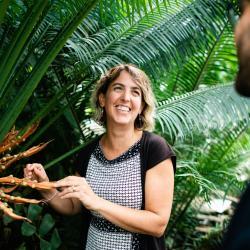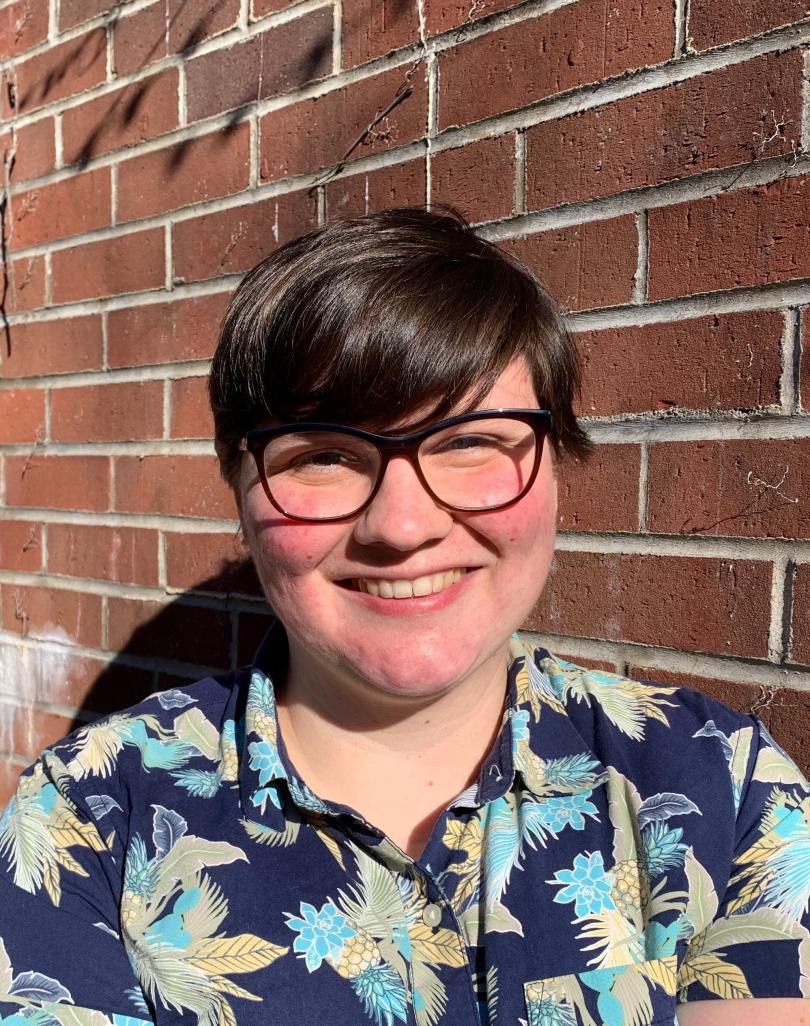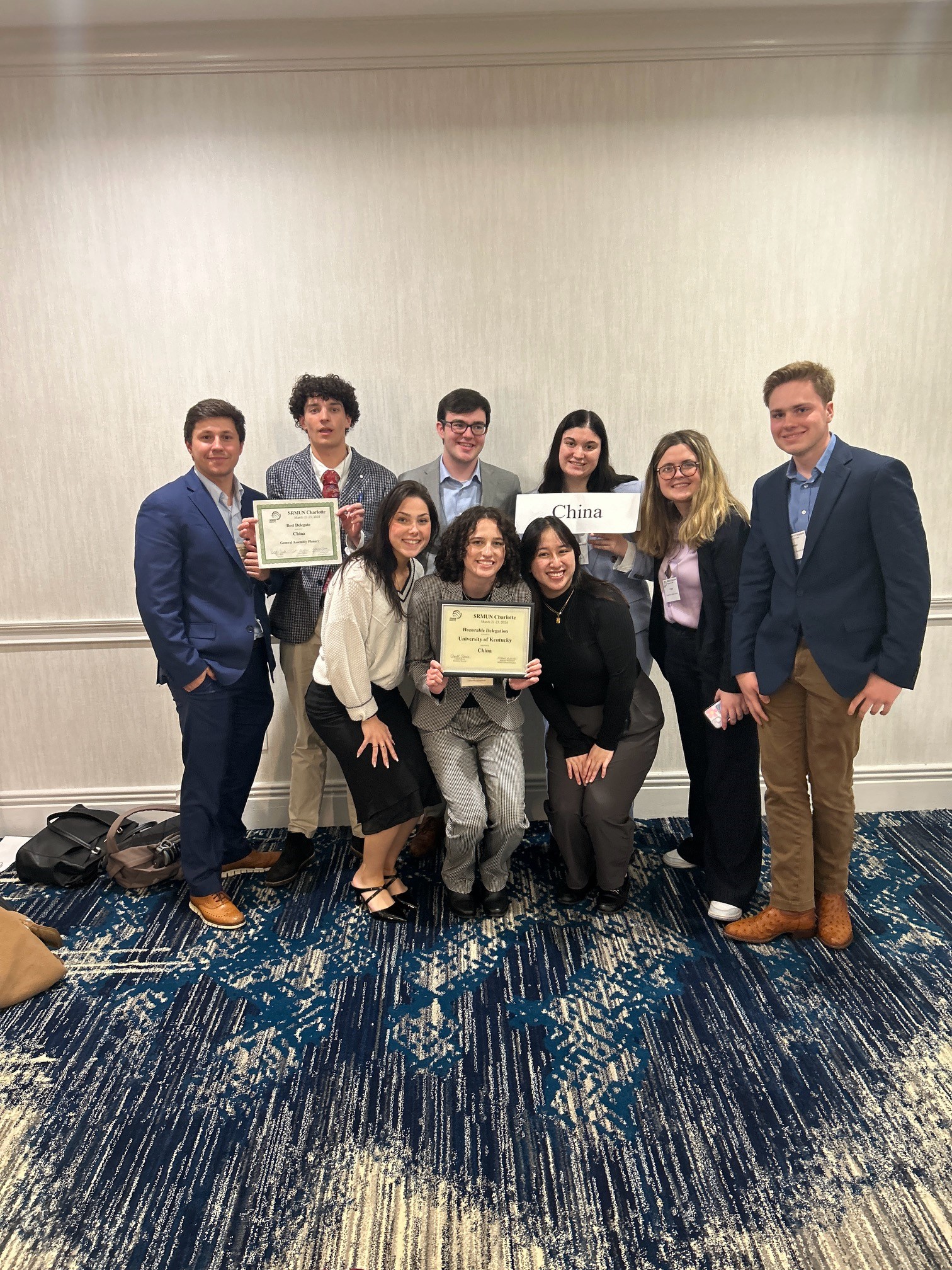"Genetic and Genomic Mechanisms Underlying the Convergent Evolution of Pollination Syndromes in the Neotropical Radiation of Costus L. (Costaceae)"

Dr. Chelsea Specht | Specht Lab
Bio:
Dr. Chelsea Specht is the Barbara McClintock Professor of Plant Biology and Associate Director for Faculty Development, Equity, and Inclusion in the School of Integrative Plant Science and serves as the elected Associate Dean of Faculty for Cornell University. She is a faculty member in the graduate fields of Plant Biology and Ecology and Evolutionary Biology and a faculty fellow of the Atkinson Center for a Sustainable Future. She is also a member of the L.H. Bailey Hortorium and affiliated with the Cornell University Herbarium.
In the Specht Lab we work together to investigate the evolution and diversification of Plant Form and Function. We use traditional morphological and developmental techniques combined with molecular genetics, comparative genomics and evolutionary biology to study the natural diversity of plants and to help better understand the forces creating and sustaining this diversity. Our research incorporates elements of systematics, developmental genetics and molecular evolution to study the patterns and processes associated with plant speciation and diversification. We take advantage of living and preserved collections to advance our research in plant systematics, biogeography, and developmental evolution.
Abstract:
Fifty years since Dr. Paul J.M. Maas published his first monograph of the New World Costoideae, we continue to struggle with species boundaries and evolutionary relationships within this charasmatic lineage of tropical monocotyledonous plants. In fact, the more we explore and discover the more questions emerge about the dynamics, patterns, and processes leading to speciation and diversification across the Neotropical Costaceae. In this seminar, I will discuss the recent monographic revision and its critical role in establishing a framework for evolutionary and ecological studies of the Neotropical Costus lineage within a phylogenetic context. The tempo and mode of speciation events are correlated with morphological changes that influence organismal interactions, including pollination and herbivory. Ecologic, morphologic, and biogeographic conditions that appear to promote hybridization and result in the potential for hybrid speciation are discussed across the genus, and implications for developing a stable taxonomy – and whether or not that is even possible or desirable – will be discussed.
"The Dual Role of Parental Conflict in Speciation: Lessons from Mimulus""

Dr. Jennifer Coughlan | Coughlan Lab
Bio:
See attached CV here.
Abstract:
Determining what factors generate biodiversity is a central question in evolutionary biology. Despite its long history of study, we are only beginning to understand the evolutionary drivers of reproductive barriers between species, including reproductive barriers that manifest as sterile or dead hybrids. An intriguing hypothesis is that intragenomic conflicts- or selfish evolution- can drive the evolution of alleles that cause hybrid sterility/inviability. One such source of conflict is conflict between parents over resource allocation to offspring. Under parental conflict, multiple paternity drives the evolution of paternally derived, resource-acquiring alleles, and maternally derived alleles that distribute resources equally among offspring. In hybrids, mismatches between these parent-of-origin effect alleles can cause inappropriate development of placenta or endosperm, and subsequently embryo death. Here, I test the role of parental conflict in generating one of the most common intrinsic barriers in seed angiosperms- hybrid seed inviability-using members of the evolutionary and ecological model system; the Mimulus guttatus species complex. I show that hybrid seed inviability has evolved rapidly and repeatedly in this group, and patterns of HSI conform to the predictions of parental conflict. Additionally, genetic mapping suggests that hybrid seed inviability is conferred by nuclear, parent-of-origin effect loci (i.e. loci that affect the probability of death only if maternally or paternally derived). Lastly, using a series of natural surveys and mixed pollination crosses, I find that species with different histories of parental conflict frequently co-occur and hybridize, and hybridization between species with differing histories of parental conflict can indirectly influence growth in intraspecific seeds. Overall, this work highlights a dual role of parental conflict in the speciation process; both in the origin of reproductive isolation, but also in the dynamics and outcomes of hybridization in nature.
Watch the seminar here!
"Phylodynamic and Comparative Approaches for Reconstructing Major Evolutionary Transitions in Deep Time"

Dr. Tiago Simões | Simões Lab
Bio:
Dr. Tiago Simões started his career in his home city (Rio de Janeiro, Brazil), where he obtained his BSc and MSc in Biological Sciences- Zoology at the Federal University of Rio de Janeiro and the National Museum of Brazil. He obtained his PhD at the University of Alberta, Canada, in 2018 working with Dr. Michael Caldwell. Between 2019 and 2023 he was a Postdoctoral Fellow at the Museum of Comparative Zoology & Dpt. Organismic and Evolutionary Biology, Harvard University, working with Dr. Stephanie Pierce, and since 2022 a Research Associate in the Division of Vertebrate Zoology at the American Museum of Natural History. Since 2024, he has been an Assistant Professor in the Dpt. Ecology and Evolutionary Biology at Princeton University.
Dr. Simões’s research integrates data from living and extinct species, as well as morphological and genomic data, to investigate deep time problems in vertebrate evolution, with a special focus on the origin and early evolution of lizards and snakes. He has created several new morphological and total-evidence datasets employing state-of-the-art techniques in Bayesian phylogenetics and phylodynamics that helped bridging gaps between morphological and molecular hypothesis of reptile evolution. These studies, along with new technical advances in phylogenetics have been published in several peer-reviewed scientific articles creating, including in Nature, Nature Ecology & Evolution, and Science Advances.
:
The history of life on Earth is marked by complex interactions between species genomes and phenotypes across constantly changing environments. Therefore, it is necessary to investigate these interactions across deep evolutionary time to understand the processes responsible for the construction of both past and modern biological diversity. However, this line of research has historically faced several logistic and methodological limitations, such as the lack of quantitative methods for combining various data types sampled across vastly different organismal and temporal dimensions. Fortunately, the past decade has been testimony to several advances in Bayesian evolutionary analyses that have fostered the integration of data types towards more sophisticated inferences of evolutionary trees and macroevolutionary dynamics. Here, I will illustrate how I have used and expanded this class of techniques to integrate molecular and phenotypic data from living and fossil species to understand the patterns and processes operating across major evolutionary transitions in vertebrates, with a special focus on reptiles. These results have overhauled the structure of key areas of the reptile tree of life, including the origin of lizards and turtles, the interplay between phenotypic and molecular innovations during evolutionary transitions, and how these events have been impacted by climate change across deep time. I conclude by highlighting how a new omics era, integrating whole genomes and phenomes, can conciliate historical challenges in understanding organismal evolution and the interplay between genomes and phenotypes with their surrounding environments across broad taxonomic and time scales.
Watch the seminar here!
"Circadian Clocks and Their Impact on Metabolism, Aging and Longevity"

Dr. Joseph Takahashi | Takahashi Lab
Bio:
Joseph S. Takahashi is the Loyd B. Sands Distinguished Chair in Neuroscience, Investigator Emeritus in the Howard Hughes Medical Institute, and Chair of the Department of Neuroscience at the University of Texas Southwestern Medical Center in Dallas. He joined UT Southwestern in 2009. Takahashi was born in Tokyo, Japan (US Citizen) and grew up in Burma, Italy and the Maryland suburbs of Washington, DC. He graduated from Swarthmore College, Pennsylvania, with a BA in Biology; did his graduate studies with Michael Menaker at UT Austin and University of Oregon, Eugene (PhD in 1981). He was a Pharmacology Research Associate at the NIMH and joined the faculty of Northwestern University in 1983, where he was the Walter and Mary Elizabeth Glass Professor in the Life Sciences at Northwestern University. During his 26-year tenure at Northwestern, he held appointments as professor in the Department of Neurobiology on the Evanston campus and director of the Center for Functional Genomics.
His research interests are the molecular mechanism of circadian clocks, the genetic basis of behavior, and the role of circadian clocks in regulating metabolism, aging and longevity. Dr. Takahashi pioneered the use of forward genetics in the mouse as a tool for discovery of genes underlying neurobiology and behavior, and his discovery of the mouse and human Clock genes led to a description of a conserved circadian clock mechanism in animals. He has gone on to demonstrate critical physiological roles of the clock in metabolism, genome-wide gene expression and epigenetics. Recently he has discovered key roles for circadian clocks in parasitic diseases such as sleeping sickness and malaria. In the field of aging, his lab has recently shown that circadian alignment of feeding under caloric restriction is a major factor in lifespan extension in mice. He is the author of more than 340 scientific publications and the recipient of many awards including the Honma International Prize in Biological Rhythms Research in 1986, W. Alden Spencer Award in Neuroscience from Columbia University in 2001, Eduard Buchner Prize from German Society for Biochemistry and Molecular Biology in 2003, Outstanding Scientific Achievement Award from the Sleep Research Society in 2012, and the Gruber Neuroscience Prize from the Gruber Foundation and the Society for Neuroscience in 2019 (the top award in the field of neuroscience in the USA). He was selected as a Thomson Reuters Highly Cited Researcher in Biology and Biochemistry in 2014 and 2019, and Web of Science Highly Cited Researcher in 2019-2021. He was elected a Fellow of the American Academy of Arts and Sciences in 2000, a Member of the National Academy of Sciences in 2003, and a Member of the National Academy of Medicine in 2014.
Takahashi has served on a number of advisory committees for the National Institutes of Health, as well as scientific advisory boards for Eli Lilly and Company, the Genomics Research Institute for the Novartis Foundation, The Klingenstein Fund, the Searle Scholars Foundation, the McKnight Foundation, the Allen Institute for Brain Science, the Max Planck Institute for Biophysical Chemistry, the Bristol-Myers Squibb Neuroscience Award Selection Committee, INSPIRE Servier International, and the Restless Legs Syndrome Foundation. He is/was a member of the editorial boards for PNAS, eLife, PLoS Genetics, Neuron, Aging Cell, Curr Opin Neurobiol, Physiological Genomics, J. Biol. Rhythms, Genes Brain Behav, and the Faculty of 1000. He was also a co-founder of Hypnion, Inc., a biotech discovery company in Worcester, Mass., that investigated sleep/wake neurobiology and pharmaceuticals (now owned by Eli Lilly and Co.), and was a co-founder of Reset Therapeutics, Inc., a biotech company that worked on the role of clocks in metabolism. He is a co-founder of Synchronicity Pharma, a biotech company working on the role of circadian clocks in sleep disorders and cancer.
Abstract:
Genetic analysis of circadian behavior in mice has revealed that the molecular basis of circadian clocks involves an autoregulatory transcriptional network that oscillates with a 24-hour periodicity. In mammals, the discovery of “clock genes” led to the realization that circadian clocks are cell autonomous and are expressed in the majority of cells and tissues in the body. The master circadian pacemaker located in the hypothalamic suprachiasmatic nucleus sits at the top of a hierarchy of oscillators in the body, but peripheral oscillators can and do respond to more proximal signals such as nutrients and metabolites. Thus, the “circadian system” in mammals is a multi-oscillatory hierarchy. In addition to controlling the timing of behavior and physiology, the circadian clock gene network interacts directly with many other pathways in the cell. These include metabolism, immune function, cardiovascular function, cell growth, as well as, the majority of the “hallmarks of aging” pathways. With respect to metabolism, the timing of nutrient consumption is critical, and we and others have shown that restricting the timing of feeding has many health benefits. We have found that time restriction and circadian alignment of feeding are critical factors for extension of lifespan under caloric restriction. Because the circadian gene network is a conserved regulator of aging and longevity in mice and humans and because circadian transcriptional drive declines with age, we are testing interventions that rescue circadian amplitude as agents to promote healthspan and lifespan. We propose that the circadian gene network is a novel target for aging and longevity.
Watch the seminar here!


